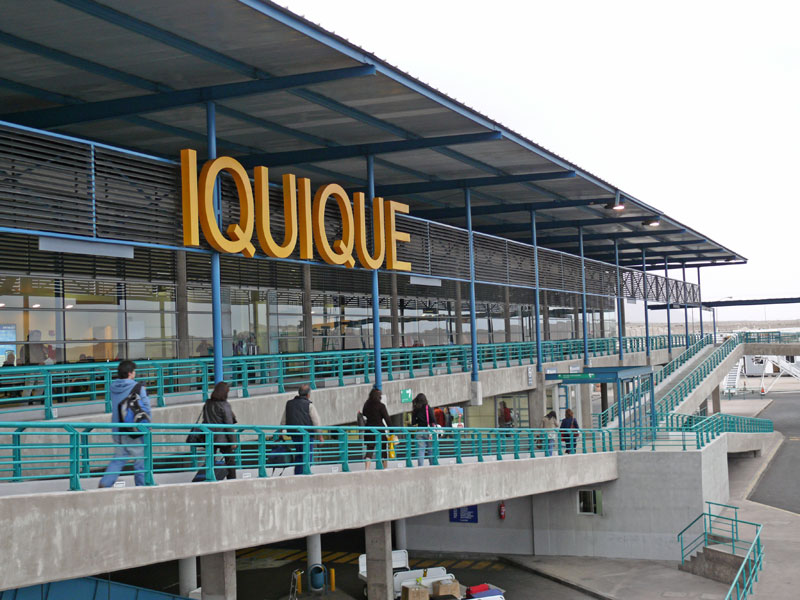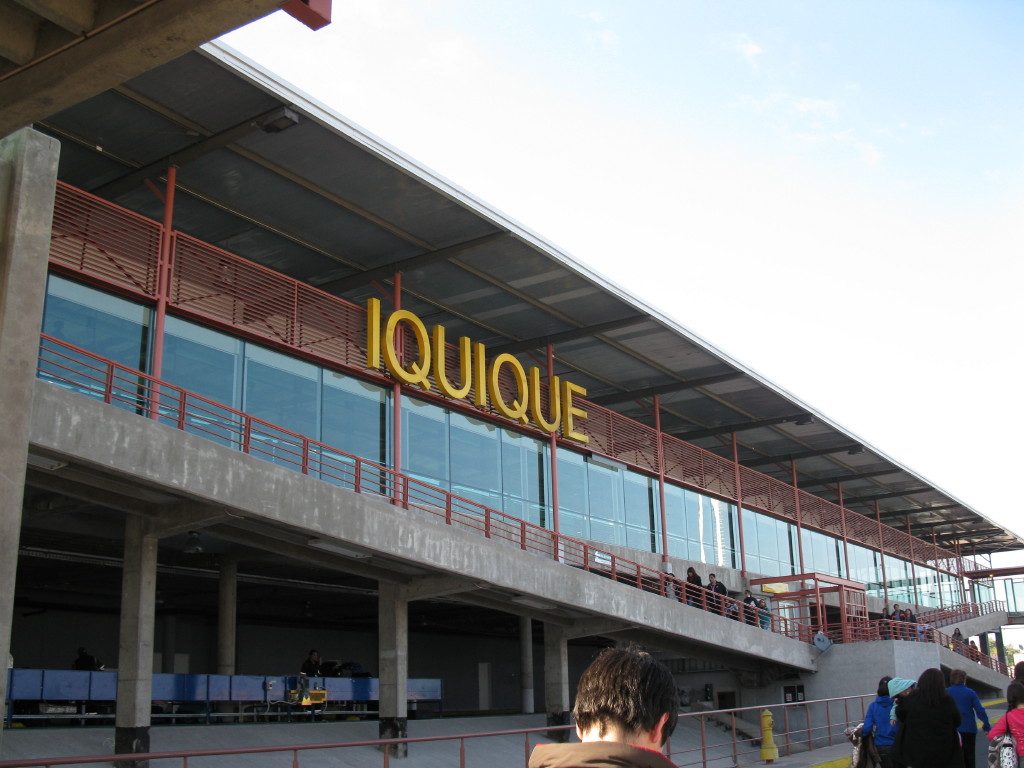Google Discover: Insights From Iquique & Diego Aracena Airport
Is it possible to trace the legacy of individuals who have indelibly shaped the course of aviation, particularly those who rose to prominence in the early days of flight? The annals of history are replete with figures whose dedication, strategic acumen, and leadership propelled the nascent field of aviation to new heights, leaving behind a lasting impact that continues to resonate today.
In the context of aviation, the name Diego Aracena Aguilar serves as a compelling reminder of the past. His story is one of courage and dedication, especially in the formative years of aviation. He was a leader who took charge during a time of significant change and advancement in flight technology, navigating the challenges and opportunities that defined the aviation sector.
General del Aire Diego Aracena Aguilar, a name etched in the chronicles of aviation history, took command of the institution in December 1932. Prior to his elevation to this pivotal role, General Aracena Aguilar held the rank of Comandante de Grupo, demonstrating a steady rise through the ranks. His previous experience in the Subsecretara de Aviacin (Undersecretariat of Aviation) proved invaluable, equipping him with the essential knowledge and insights to lead. This transition marked a significant moment, reflecting both the progress made and the inherent difficulties of building the aviation sector.
| Category | Details |
|---|---|
| Full Name | Diego Aracena Aguilar |
| Rank at Command | General del Aire |
| Date of Assuming Command | December 1932 |
| Previous Position | Served in the Subsecretara de Aviacin (Undersecretariat of Aviation) |
| Prior Rank | Comandante de Grupo |
| Key Contributions | Leadership during a formative period in aviation history. His leadership shaped the development of aviation |
| Nationality | Chilean |
| Areas of Expertise | Military Aviation, Leadership, Strategic Planning |
| Historical Significance | Instrumental in guiding the institution, during a time of significant technological advancement. |
The narrative of aviation is also interwoven with the intricacies of scientific inquiry. Fernando Camargo, a figure of significant importance, has made important contributions to our comprehension of cell populations in aging hematopoiesis. His work helps us understand the aging process and its effects on the blood-forming cells. This research is essential for the creation of effective treatments and interventions that promote a longer, healthier life.
Navigating the practicalities of air travel necessitates a careful approach, especially for those embarking on international or long-distance journeys. Travelers are advised to carefully assess the luggage limits imposed by their respective airlines, including dimensions, weight, and the types of prohibited items. It's a critical step in planning and will help travellers avoid any inconvenient surprises at the airport.
Moreover, travelers must guarantee that all necessary documentation is readily available for the check-in process. This includes the flight reservation number, passport, and any other necessary forms or documentation. This proactive method helps expedite the check-in process and ensures a smoother and more efficient start to the journey.
In the rapidly changing world of aviation, keeping up to date on current developments is essential. Because of the unpredictable nature of air travel, passengers are urged to check in with their airline by phone or through their website for the most up-to-date flight status information. This enables travellers to make necessary preparations for possible delays or schedule changes.
Furthermore, the city of Iquique, Chile, is home to the Aeropuerto Internacional Diego Aracena Aguilar, which was formerly known as Chucumata. It is a crucial transportation center that connects Iquique to the rest of the world. The airport is located 45 kilometers south of Iquique's city center and can be accessed via the Ruta 1 highway. The trip from the city center is approximately 235 minutes, which offers a scenic route that highlights the region's diverse terrain.
| Category | Details |
|---|---|
| Airport Name | Aeropuerto Internacional Diego Aracena Aguilar |
| Previous Name | Chucumata |
| Location | 45 kilometers south of Iquique city center, Chile |
| Access Route | Ruta 1 highway |
| Travel Time from City Center | Approximately 235 minutes |
| Key Features | Serves as a gateway to and from Iquique, facilitating both domestic and international travel. |
| Operational Significance | Supports tourism, trade, and connectivity within the region and beyond. |
| Infrastructure | Includes terminals, runways, and associated aviation facilities. |
| Services | Offers various services, including check-in, baggage handling, and passenger amenities. |
To ensure a well-informed travel experience, it is highly recommended that you consult route maps and timetables for flights to and from Iquique. Additionally, reading airport reviews provides useful insights into traveler experiences, highlighting the airport's amenities and effectiveness. This information assists travelers in efficiently organizing their journeys and anticipating any possible logistical difficulties.
For anyone interested in the world of aviation, Flightradar24 is an essential tool. This real-time flight tracking service is the most widely used in the world. It provides comprehensive, up-to-the-minute flight information, allowing users to monitor aircraft movements around the globe. Whether you're tracking a specific flight or simply fascinated by the intricacies of air travel, Flightradar24 offers unparalleled access to the dynamic world of aviation. It has grown to be a crucial resource for both professionals in the aviation sector and casual enthusiasts.
From the leadership of General Diego Aracena Aguilar to the scientific contributions of researchers like Fernando Camargo, aviation is filled with amazing people. The Aeropuerto Internacional Diego Aracena Aguilar and the flight tracking capabilities of Flightradar24 are essential resources. These elements, when combined, give a thorough picture of aviation's development. It is an ongoing saga that combines individual ambition, scientific advancement, and technical innovation, making significant contributions to the world.
The evolution of aviation continues to be marked by developments, requiring both adaptation and a dedication to staying informed. The sector is characterised by a continuous need to change and innovate in order to satisfy the needs of a globalized society. This includes everything from the development of more effective air travel services to the implementation of stricter security procedures.
Furthermore, the integration of technology is essential to the current state of aviation. From innovative navigation systems to the use of data analytics to improve efficiency, technology is at the forefront of how airlines operate and provide service. The ability to adjust and implement new technology is essential for the continued expansion and sustainability of the sector.
The requirement for careful travel planning is emphasized as well. Passengers need to know about luggage restrictions, have all the necessary documentation ready for check-in, and keep up with the latest flight status updates. By making informed decisions and taking proactive measures, travelers can improve the quality of their travel experiences.
Looking ahead, the aviation industry's future is promising, filled with prospects for development and innovation. There is a potential for revolutionary change as new technologies appear, such as sustainable aviation fuels and improved aircraft designs, which have the potential to revolutionize how we travel. A persistent devotion to safety, sustainability, and passenger pleasure will be crucial to ensuring aviation's continued success in the years to come.
The legacy of people like General Diego Aracena Aguilar, who rose to prominence and steered the aviation business during a time of enormous change, is an important element of the aviation narrative. Their commitment and knowledge formed the cornerstone of aviation's development. The combined efforts of researchers like Fernando Camargo, who provide new insights into fundamental scientific processes, and the airport facilities such as Aeropuerto Internacional Diego Aracena Aguilar, which provide crucial transportation infrastructure, demonstrate aviation's breadth and variety.
The combination of these variables makes aviation an ever-evolving field. It is a dynamic industry that is constantly developing to satisfy the needs of the world. It is a complicated industry with a wide range of participants who are all committed to improving and growing aviation. The future of aviation will be shaped by continued innovation, a dedication to sustainability, and a focus on the traveler experience.
In conclusion, the aviation industry is a tribute to human innovation and perseverance, representing the best of our ability to push boundaries and connect the world. The aviation sector continues to inspire and astound us with its capacity for constant adaptation. Aviation is ready to lead the way in a future that is defined by both technological advancements and a dedication to making travel accessible to everyone, as we move forward.



Detail Author:
- Name : Dr. Matteo Lebsack
- Email : kkemmer@hotmail.com
- Birthdate : 2000-03-17
- Address : 698 Hillard Knoll Freidatown, ND 51133-2500
- Phone : 1-380-450-9376
- Company : Wisozk-Howell
- Job : Mining Engineer OR Geological Engineer
- Bio : Quia laudantium labore consequatur saepe. Dolorem vero hic sit voluptatem sint minus. Minima qui inventore libero aut.